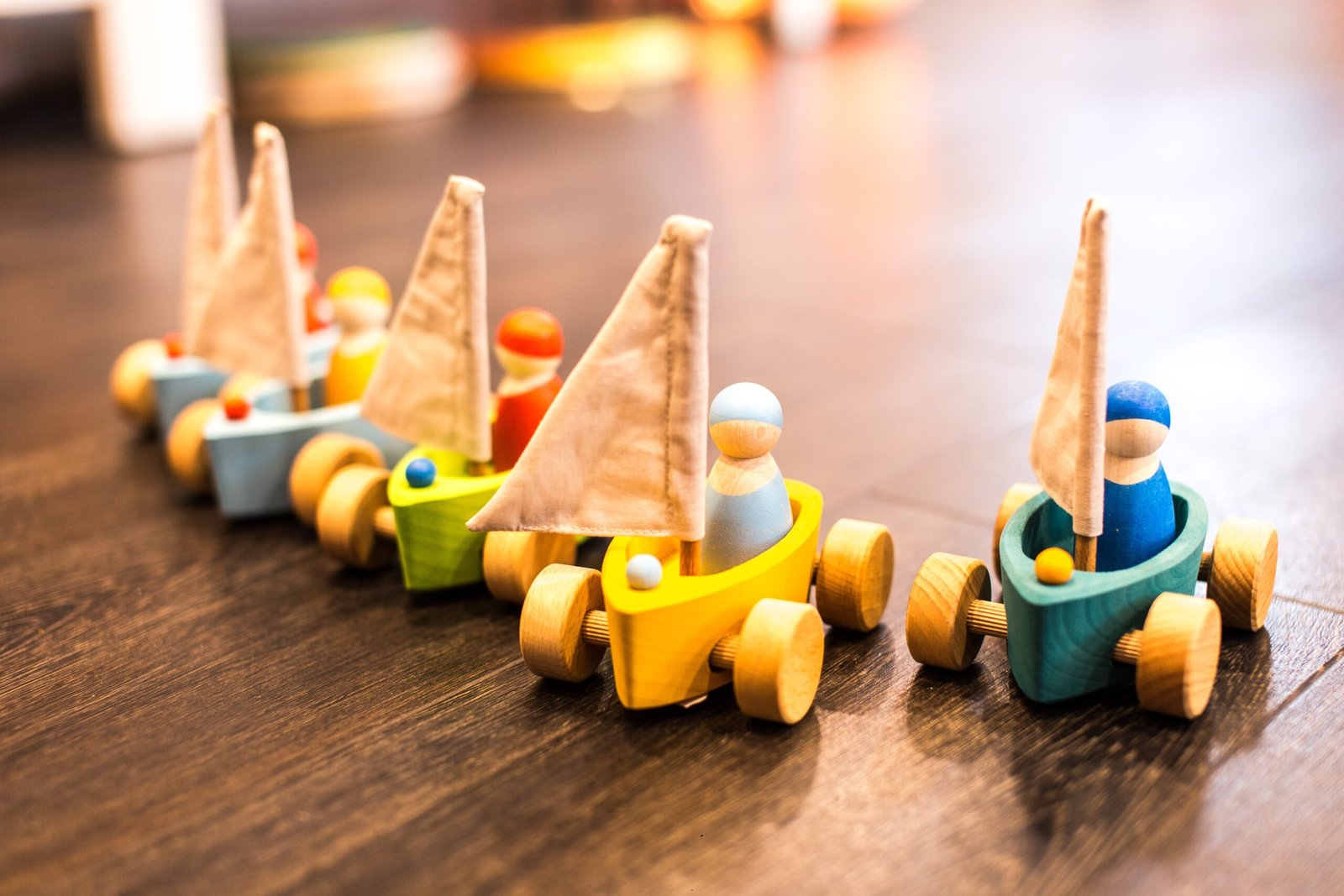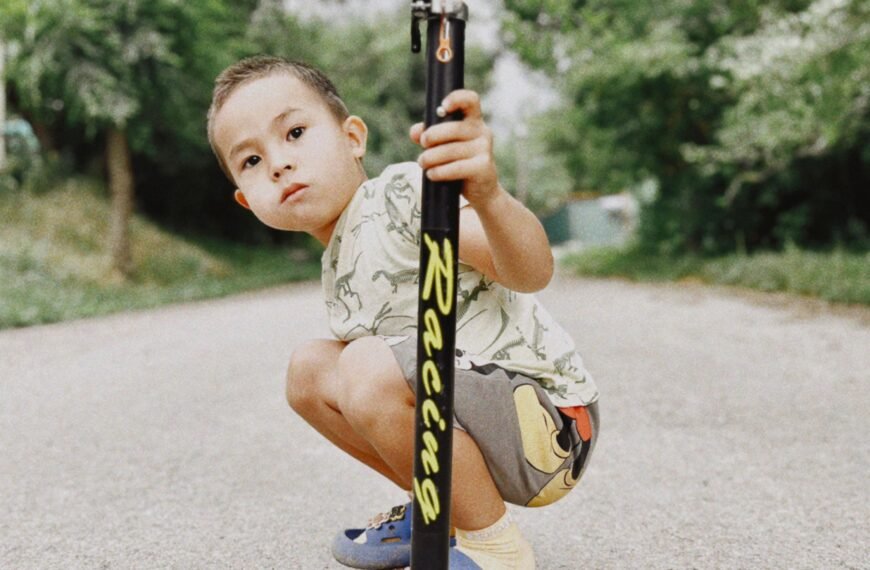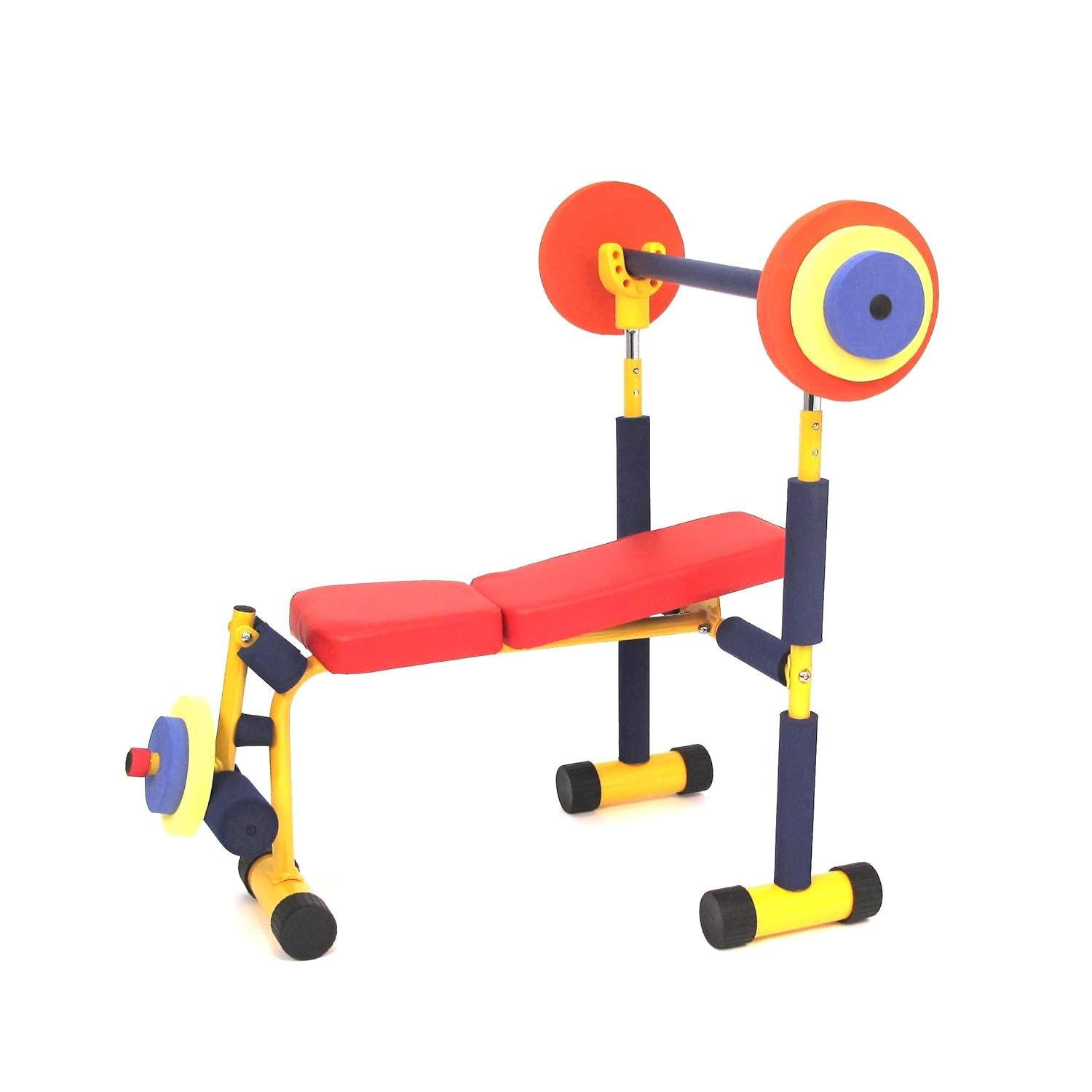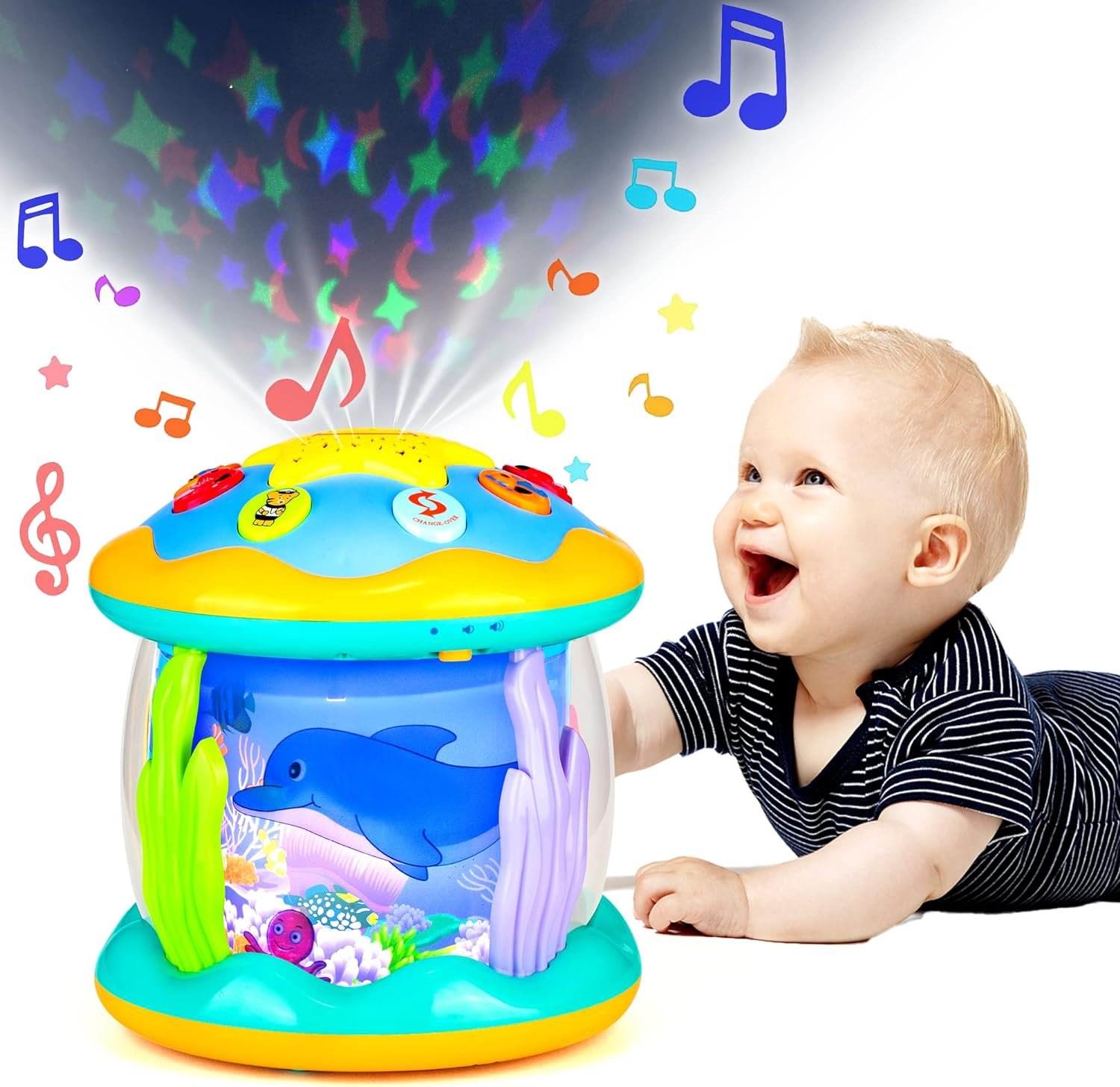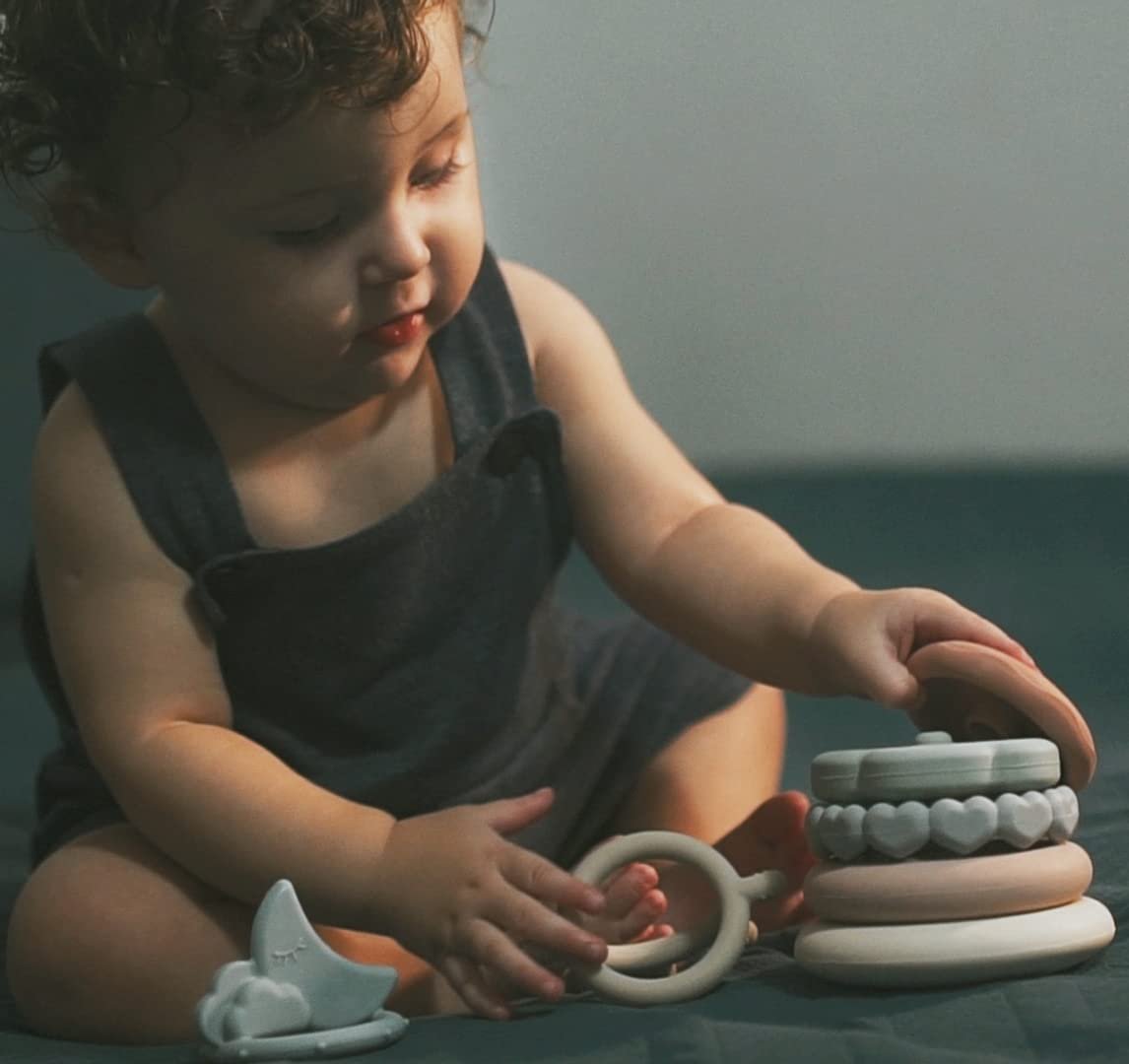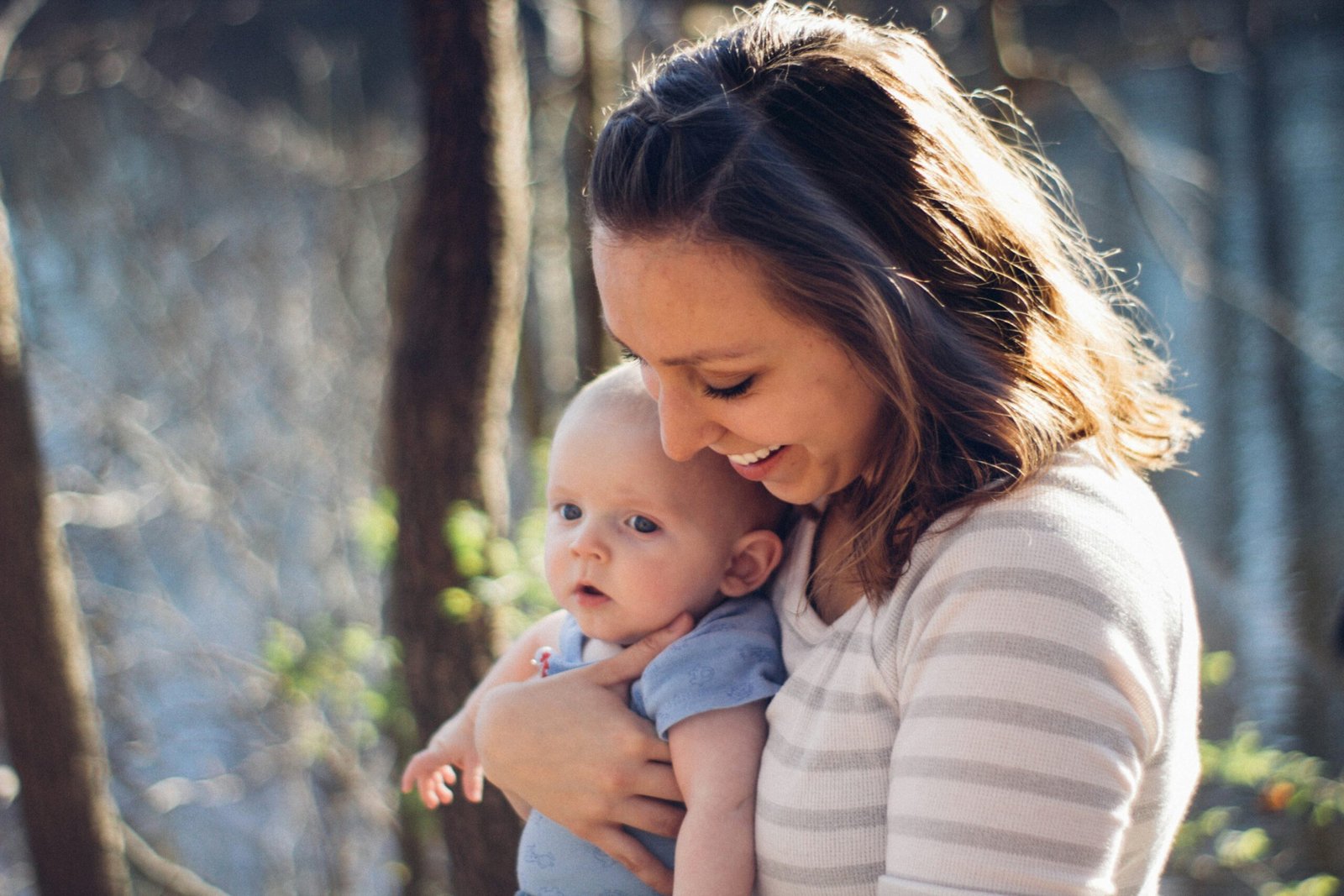So, you have a new bundle of joy in your life and you’re wondering when is the right time to introduce toys to your little one? Well, fret not! In this article, we’ll explore the optimal age and developmental milestones that indicate when your baby is ready to explore the exciting world of toys. From the early days of grasping objects to the curious stage of exploration, we’ll guide you through each step of the way, ensuring that your baby’s playtime is both enjoyable and beneficial for their overall development. Let’s dive in and discover when to introduce toys to your baby!

Check Baby Toys Guide & Review
Benefits of introducing toys to babies
Introducing toys to babies can have a multitude of benefits for their overall development. From enhancing their fine motor skills to stimulating their sensory exploration, toys play a vital role in promoting learning and growth in infants.
Development of fine motor skills
Toys provide babies with the opportunity to engage in hand-eye coordination, grasping, and manipulation exercises. Activities such as picking up and manipulating objects help strengthen the muscles in their hands and fingers, thereby refining their fine motor skills. Whether it’s playing with building blocks or sorting toys, these activities allow babies to develop dexterity and precision in their movements.
Enhancement of cognitive abilities
Toys also serve as excellent tools for stimulating a baby’s cognitive abilities. From simple stacking toys to shape sorters, these playthings encourage problem-solving skills, reasoning abilities, and spatial awareness in infants. By actively engaging with different toys, babies learn to solve puzzles, recognize patterns, and understand cause and effect relationships. These cognitive exercises lay a strong foundation for their future learning and cognitive development.
Stimulation of sensory exploration
Babies are naturally curious and eager to explore the world around them. Toys that offer various textures, sounds, and colors provide a rich sensory experience for infants. Soft toys with contrasting colors and different textures help babies develop their tactile senses, while toys that produce sounds or music stimulate their auditory senses. Additionally, toys with bright colors and high contrast patterns help develop their visual perception. Engaging with these sensory-rich toys not only entertains babies but also nurtures their cognitive and sensory development.
Factors to consider before introducing toys
While introducing toys to babies can be beneficial, it is important to consider certain factors to ensure their safety and proper development. Here are some key factors to consider before introducing toys to your little one:
Age of the baby
The age of the baby is a crucial factor to consider when choosing toys. Different age groups have different developmental needs and abilities. Toys that are too advanced or complex may frustrate your baby, while toys that are too simple may not capture their interest. Understanding your baby’s age-appropriate developmental milestones can help you select toys that are suitable for their current stage.
Safety of the toys
Safety should always be a top priority when choosing toys for your baby. Ensure that the toys you select do not have any small parts that could present choking hazards. Also, inspect the toys for sharp edges or points that could potentially harm your baby. Opt for toys made from non-toxic materials and follow safety guidelines provided by the manufacturer.
Developmental stage of the baby
Every baby progresses at their own pace, so it is important to consider their individual developmental stage. Some babies may reach certain milestones earlier or later than others. By understanding your baby’s current abilities and challenges, you can choose toys that will support and encourage their development.
Interest and curiosity of the baby
Babies have their unique preferences and interests. Observe what captures your baby’s attention and what activities they enjoy. Some babies may show a keen interest in music, while others may prefer exploring different textures. By selecting toys that align with your baby’s interests, you can foster their curiosity and engagement in playtime.
Recommended ages for introducing toys
Understanding the recommended ages for introducing toys can help ensure that you provide your baby with toys that are not only safe but also appropriate for their developmental stage. Here is a breakdown of the recommended ages for introducing toys:
0-3 months
During the first three months of life, babies are mainly focused on developing their senses and understanding the world around them. Soft toys with contrasting colors, mobiles with simple patterns, and rattles are suitable options for this age group. These toys provide visual and auditory stimulation, while also introducing babies to different textures.
3-6 months
Between three to six months, babies start to gain more control over their movements and become more interactive. Interactive toys with lights, sounds, and textures can engage their developing senses. Simple grasping toys, such as teethers or rattles with different shapes or textures, can also help them refine their hand-eye coordination and fine motor skills.
6-9 months
At this stage, babies become more mobile and start exploring their surroundings. Toys that encourage crawling, such as rolling balls or crawling tunnels, can promote physical development. Stacking and sorting toys, as well as toys that encourage reaching and grasping, are great for further developing fine motor skills.
9-12 months
Between nine to twelve months, babies begin to develop a greater sense of independence. Pretend play toys, such as toy phones or kitchen sets, allow them to imitate everyday activities and enhance their imaginative play skills. Large building blocks and simple puzzles are also appropriate for this age group as they promote problem-solving and spatial awareness.
12-18 months
Toddlers between the ages of twelve to eighteen months are full of energy and are constantly exploring their environment. Toys that encourage physical activity, such as ride-on toys or push toys, can help them refine their gross motor skills. Moreover, toys that involve shapes, colors, and numbers can aid in their cognitive development.
18-24 months
As toddlers approach the age of two, they become more curious and interested in the world around them. Puzzles with larger pieces, pretend play toys that imitate daily activities, and art supplies like crayons and paper can promote problem-solving, creativity, and fine motor skills.
Types of toys suitable for different ages
Toys come in various shapes, sizes, and designs, each catering to specific age groups. Here are some types of toys suitable for different ages:
Soft toys with contrasting colors and textures
During the early months, soft toys with high contrast patterns and various textures help stimulate a baby’s developing vision and tactile senses. Plush toys with different textures, such as fuzzy, smooth, or crinkly, provide sensory exploration opportunities.
Rattles and simple grasping toys
Rattles and simple grasping toys are ideal for babies who are developing their fine motor skills. These toys are easy for babies to hold and shake, promoting coordination and grasping abilities.
Interactive toys with lights and sounds
Interactive toys with lights and sounds engage babies’ senses and encourage their exploration. From musical toys to activity centers, these toys provide auditory and visual stimulation while promoting cognitive development.
Stacking and sorting toys
Stacking and sorting toys help babies refine their hand-eye coordination, fine motor skills, and spatial awareness. These toys challenge them to solve problems and recognize shapes and patterns.
Pretend play toys
As babies grow older, pretend play toys become more appealing. Kitchen sets, tool sets, or dolls allow babies to imitate and explore various real-life scenarios, enhancing their imaginative play skills and social development.
Large building blocks and puzzles
Large building blocks and puzzles encourage problem-solving skills and promote creativity. Babies can explore different shapes, colors, and develop spatial awareness while playing with these toys.

Signs that your baby is ready for toys
As your baby grows and develops, there are certain signs that indicate they are ready to engage with toys. Observing your baby’s behavior and milestones can help you identify when they are ready for toys. Here are some signs that indicate your baby is ready for toys:
Improved hand-eye coordination
If your baby is able to track moving objects with their eyes and accurately reach and grasp objects, it is a sign that their hand-eye coordination has improved. This means they are ready to explore toys that require such coordination.
Ability to grasp objects
Babies typically develop the ability to grasp objects between three to six months. If your baby is successfully grasping and holding objects, they are ready for toys designed for this purpose, such as rattles or grasping toys.
Showing interest in surroundings
If your baby exhibits curiosity and interest in their surroundings, such as reaching out to touch objects or tracking people and objects with their eyes, it shows that they are aware of their environment. This curiosity is an indication that they are ready for more interactive toys.
Increased mobility
Once your baby starts rolling over, sitting up, or crawling, they are entering a stage where toys that encourage physical activity become more relevant. Their increased mobility means they can engage with toys that require movement, such as push toys or crawl tunnels.
Curiosity and exploration
If your baby is constantly exploring their surroundings, reaching out for objects, or trying to manipulate things, it shows a natural curiosity and desire to explore. This is a clear sign that they are ready for toys that stimulate their senses and encourage further exploration.
Toy safety guidelines for babies
When introducing toys to your baby, it is crucial to prioritize their safety. Here are some essential toy safety guidelines to consider:
Choose age-appropriate toys
Select toys that are specifically designed for your baby’s age range. Age recommendations are provided by manufacturers to ensure that the toys align with your baby’s developmental abilities and safety requirements.
Inspect toys for small parts and sharp edges
Before giving a toy to your baby, thoroughly inspect it for any small parts that could pose a choking hazard. Additionally, check for any sharp edges or points that could potentially harm your baby. Investing in toys that are well-made and durable can reduce the risk of broken or hazardous parts.
Avoid toys with small pieces that can be swallowed
Small pieces, such as detachable buttons or parts, can be choking hazards for babies. Make sure to avoid toys with small pieces that can easily be swallowed or lodged in a baby’s throat. If a toy has detachable parts, ensure they are securely attached and cannot be easily pulled apart.
Ensure toys are made of non-toxic materials
Toys may come in contact with your baby’s mouth or skin, so it is essential to ensure they are made of non-toxic materials. Look for toys that are labeled as BPA-free and made from safe, non-toxic materials. Avoid toys that contain harmful chemicals or toxins.
Regularly check toys for wear and tear
Regularly inspect your baby’s toys for wear and tear. Over time, toys can become damaged, which may expose small parts or sharp edges. Dispose of any toys that are no longer safe or in good condition to avoid potential hazards.
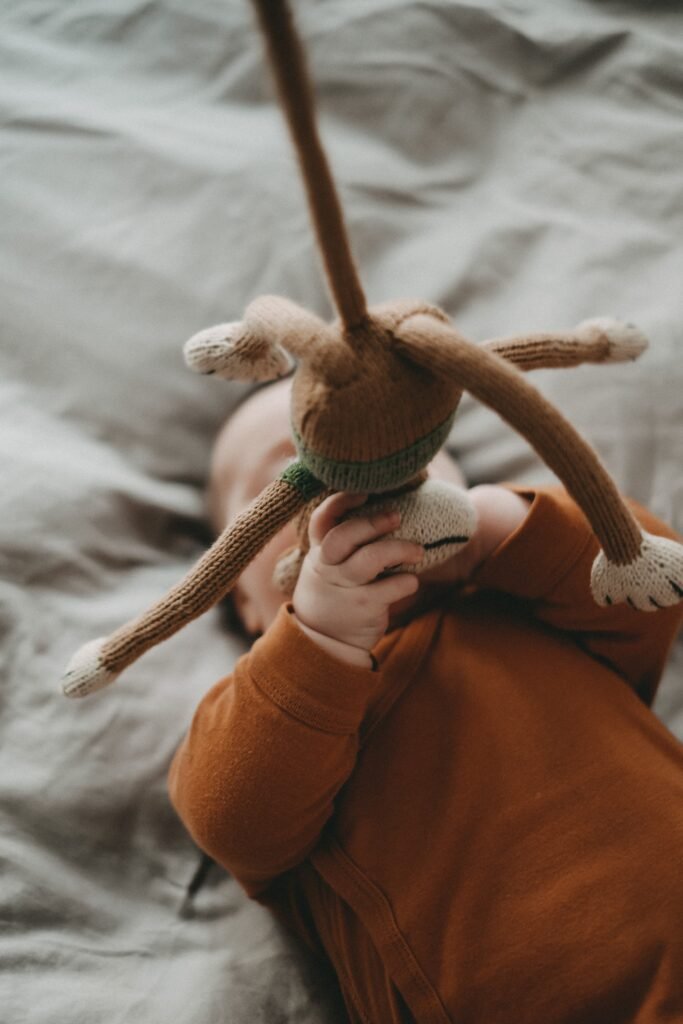
Introducing toys for sensory development
Toys can play a significant role in stimulating and developing a baby’s senses. By selecting toys that engage multiple senses, you can enhance their sensory development. Here are some tips on introducing toys for sensory development:
Toys with different textures and materials
Toys with a variety of textures and materials provide sensory stimulation and exploration opportunities for babies. Consider toys made from fabric, wood, plastic, or silicone, each offering a different tactile experience.
Toys that produce sounds or music
Toys that produce sounds or music, such as musical mobiles or musical instruments designed for babies, can introduce auditory stimulation and help develop a baby’s sense of rhythm and sound recognition.
Toys with bright colors and high contrast patterns
Babies are attracted to bright colors and high contrast patterns. Toys with vibrant colors and bold patterns can capture their attention and help develop their visual perception. Look for toys with contrasting colors or black and white patterns during the early months.
Toys with different shapes and sizes
Toys that come in various shapes and sizes can help babies explore their sense of touch and hand-eye coordination. Building blocks, shape sorters, and stacking toys with different shapes offer opportunities for babies to play with and understand different spatial concepts.
Benefits of interactive toys for babies
Interactive toys not only provide entertainment but also offer numerous benefits for a baby’s development. Here are some benefits of interactive toys for babies:
Promote social interaction and bonding
Interactive toys, such as games or toys with multiple pieces, can promote social interaction between babies and caregivers. Playing together with interactive toys helps foster bonding, language development, and emotional connection.
Encourage language development
Toys that engage babies in interactive play can stimulate their language development. Talking, singing, or playing with toys that require verbal interactions can support the development of communication skills, vocabulary, and language comprehension.
Develop problem-solving skills
Interactive toys often present challenges or puzzles that babies need to solve. By engaging with such toys, babies develop problem-solving skills and learn to think critically, improving their cognitive abilities and logical thinking.
Enhance fine and gross motor skills
Many interactive toys require babies to manipulate objects or engage in physical activity. This helps develop their fine and gross motor skills, hand-eye coordination, and overall physical development. Toys that encourage crawling, reaching, or grasping movements can significantly contribute to motor skill development.
Toys to avoid for babies
While there are countless toys available for babies, there are certain types of toys that should be avoided due to safety concerns. Here are some toys to avoid for babies:
Toys with small parts
Toys with small parts can pose a choking hazard for babies, particularly those under three years of age. Avoid toys with detachable small parts that could potentially come loose and be swallowed.
Toys with cords or strings
Toys with long cords or strings can be dangerous, as babies may accidentally get entangled or strangled. Ensure that toys with cords or strings are not within reach of your baby, especially when they are playing unsupervised.
Toys with loud or alarming sounds
Toys that produce loud or alarming sounds can be overwhelming and distressing for babies. Excessive noise can cause discomfort and potentially harm their hearing. Opt for toys that produce gentle, soothing sounds or adjustable volume levels.
Toys with sharp edges or points
Toys with sharp edges or points can cause injuries to babies. Avoid toys with rough or jagged edges that could potentially scratch or cut your baby’s delicate skin. Opt for toys with smooth surfaces and rounded edges.
Toys with harmful chemicals or toxins
Always ensure that the toys you choose for your baby are made from safe and non-toxic materials. Avoid toys that contain harmful chemicals such as lead or phthalates, which can pose health risks to your baby.
How to choose age-appropriate toys
Selecting age-appropriate toys for your baby is crucial to their safe and effective playtime. Here are some tips for choosing age-appropriate toys:
Consider the baby’s developmental stage
Take into consideration your baby’s current developmental stage and abilities. Choose toys that align with their motor skills, cognitive abilities, and interests. Toys that are too advanced may frustrate your baby, while toys that are too simple may not provide enough stimulation.
Check the recommended age range on the toy
Pay attention to the recommended age range provided by the manufacturer on the toy’s packaging. This information is based on safety regulations and the toy’s suitability for specific developmental stages. Select toys that fall within your baby’s age range.
Look for toys that challenge and engage the baby
Choose toys that provide opportunities for learning and exploration. Look for toys that challenge your baby’s abilities, promote problem-solving, and encourage their curiosity. Toys that can be used in multiple ways or have different levels of complexity can keep your baby engaged and interested for longer durations.
Consider the baby’s interests and preferences
Observe your baby’s interests and preferences when selecting toys. Some babies may be fascinated by musical toys, while others may show a keen interest in building and stacking. By choosing toys that match their individual interests, you can create an engaging and enjoyable playtime experience for your baby.
In conclusion, introducing toys to babies can have numerous benefits for their development. From fine motor skill development to enhanced cognitive abilities and sensory exploration, toys play a vital role in promoting learning and growth. However, it is important to consider factors such as the age of the baby, safety of the toys, developmental stage, and the baby’s interests before introducing toys. By following age-appropriate recommendations, ensuring toy safety, and selecting toys that stimulate sensory development, you can provide your baby with a fun and enriching playtime experience. Remember to regularly assess the suitability and condition of toys and always prioritize your baby’s safety and interests when choosing age-appropriate toys.

